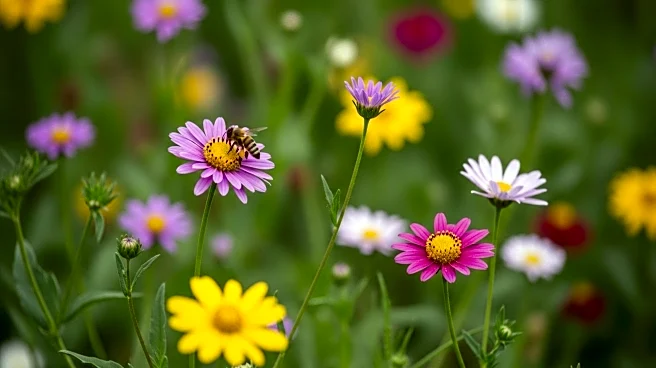Rapid Read • 7 min read
A team of ecologists from Northwestern University and the Chicago Botanic Garden conducted a long-term study on wild bumble bee nutrition, revealing that bees strategically select flowers to balance their intake of protein, fat, and carbohydrates. The study, published in the Proceedings of the Royal Society B: Biological Sciences, found that larger bees with longer tongues prefer pollen high in protein, while smaller bees with shorter tongues opt for pollen richer in carbs and fats. This dietary strategy allows different bee species to coexist without competition, supporting colony health throughout the season. The research highlights the importance of understanding pollinators' nutritional needs amid global declines in pollinator populations.
AD
The findings underscore the critical role of nutritional diversity in conservation efforts for pollinators, which face threats from habitat loss, climate change, and poor nutrition. By understanding the specific dietary needs of different bumble bee species, conservationists can design gardens and landscapes that better support these vital pollinators. This research provides valuable insights into how bees use available nutrients, which can inform strategies to mitigate pollinator declines and ensure the health of ecosystems reliant on pollination.
The study suggests that conservation efforts should focus on providing a mix of plants that cater to the diverse nutritional needs of wild bumble bees. This approach could help sustain bee populations and enhance pollination services in various ecosystems. Further research may explore how these findings apply to other pollinator species and ecosystems, potentially leading to broader conservation strategies.
The study reveals two distinct 'nutritional niches' among bumble bees, suggesting general patterns in pollinator dietary preferences. This knowledge could lead to more targeted conservation practices, emphasizing the importance of nutritional diversity over mere floral diversity. Understanding these dynamics may also contribute to broader ecological studies on species coexistence and resource partitioning.
AD
More Stories You Might Enjoy










